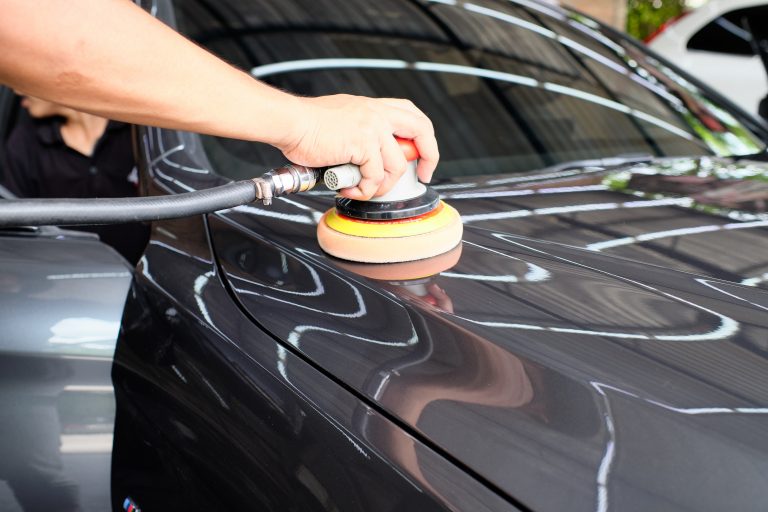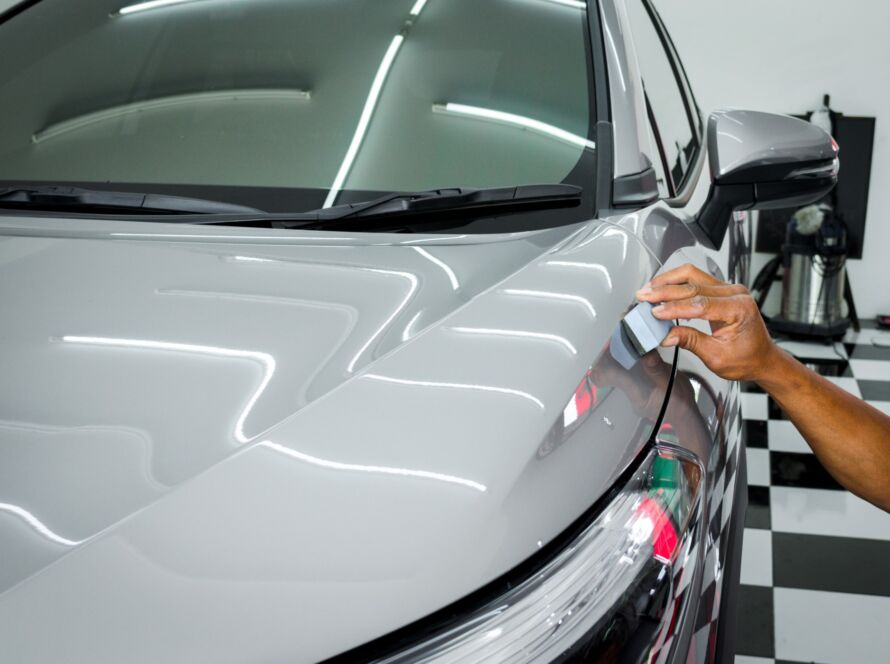Paint Correction vs Polishing vs Waxing: What’s the Difference?
Car owners often hear terms like paint correction, polishing, and waxing when researching ways to improve their vehicle’s appearance. While these services sound similar, they’re very different in purpose, technique, and results. Understanding the differences helps you make the right choice for your car’s finish.
According to detailing industry surveys, over 70% of car owners confuse polishing or waxing with paint correction, leading to mismatched expectations. Let’s clear that up.
What Is Paint Correction?
Paint correction is the professional process of permanently removing paint defects such as swirl marks, scratches, oxidation, and holograms.
- Uses machine polishing with compounds and pads.
- Removes a tiny layer of clear coat (2–5 microns).
- Creates a flawless, showroom-quality finish.
- Prepares surfaces for ceramic coating or PPF.
What Is Polishing?
Polishing is often used loosely, but in detailing it refers to:
- A refining process that smooths paint after compounding.
- Reduces haze and micro-marring.
- Improves gloss and clarity but may not remove deeper defects.
Polishing can also refer to consumer products that temporarily fill in light scratches, but true correction requires machine work.
What Is Waxing?
Waxing is a protective step, not a corrective one.
- Adds a layer of protection against dirt, water, and UV rays.
- Provides temporary gloss and slickness.
- Masks minor defects but does not remove them.
- Needs reapplication every few weeks or months depending on product.
Paint Correction vs Polishing vs Waxing: Key Differences
| Feature | Paint Correction | Polishing | Waxing |
| Purpose | Permanently removes defects | Refines finish, reduces haze | Protects paint and adds temporary gloss |
| Process | Machine compounding & polishing | Fine abrasives, light machine work | Hand- or machine-applied protective layer |
| Defect Removal | Swirls, scratches, oxidation, haze | Minor haze, light swirls | None (only hides defects) |
| Durability | Permanent results | Temporary (weeks to months) | Temporary (weeks to months) |
Why It Matters
- Paint correction = restoration
- Polishing = refinement
- Waxing = protection
Together, they form a complete system for car care: correct defects, refine clarity, and then protect the finish.
Frequently Asked Questions (FAQ)
What is the difference between paint correction and polishing?
Paint correction removes defects permanently, while polishing smooths and refines the surface but doesn’t eliminate deeper scratches.
Is waxing the same as polishing?
No. Waxing adds protection and shine but doesn’t correct or refine paint like polishing does.
Does paint correction last longer than waxing?
Yes. Paint correction is permanent, while waxing only lasts weeks to months.
Can polishing remove scratches?
Polishing can reduce light scratches, but only paint correction removes moderate defects.
Why do I need waxing if I do paint correction?
Waxing (or ceramic coating) protects corrected paint and helps maintain the finish.
Do I need paint correction before waxing?
For the best results, yes. Waxing on uncorrected paint only masks defects.
Can I do polishing and waxing at home?
Yes, but professional tools and techniques deliver better results, especially for correction.
Does paint correction replace waxing?
No. Correction restores paint, while waxing adds protection. Both are important.
How often should I wax my car?
Typically every 1–3 months, unless upgraded to a longer-lasting ceramic coating.
Should I get paint correction, polishing, or waxing first?
The order is correction → polishing → protection (wax or ceramic coating).




